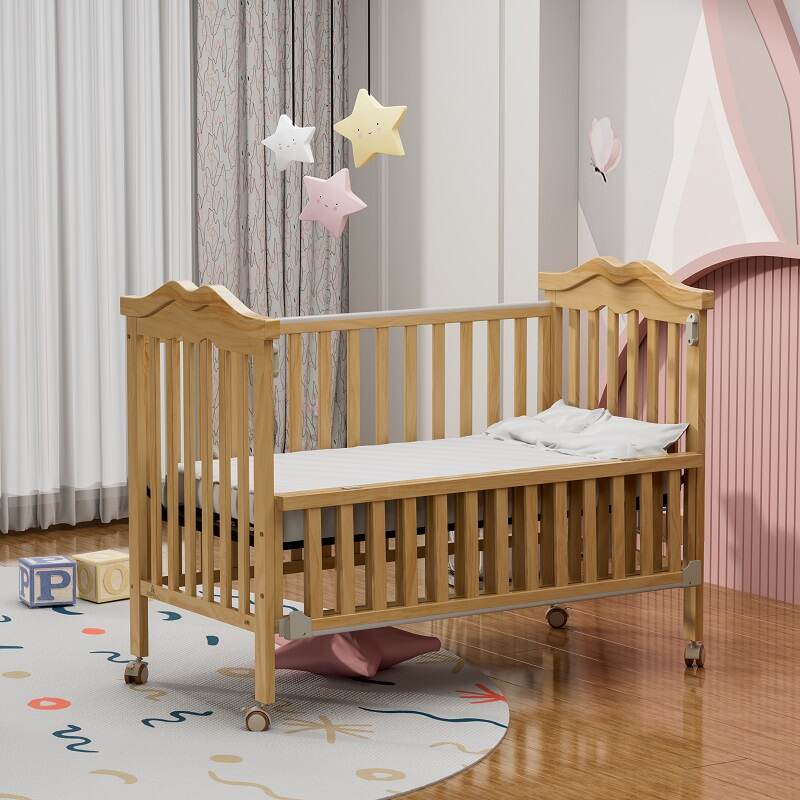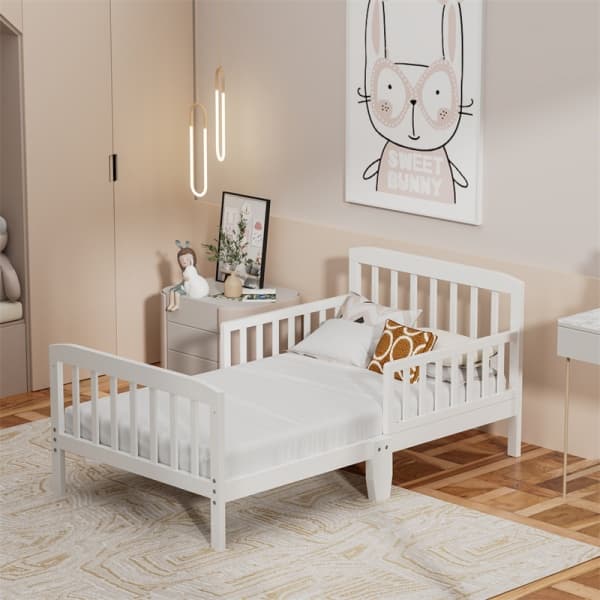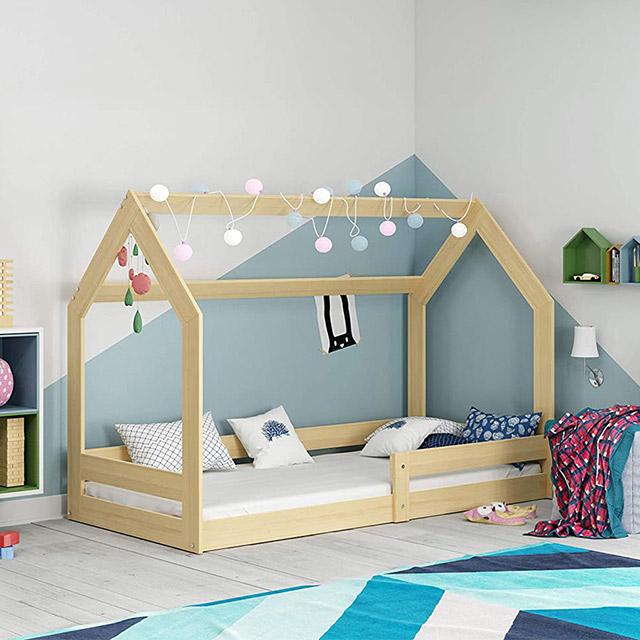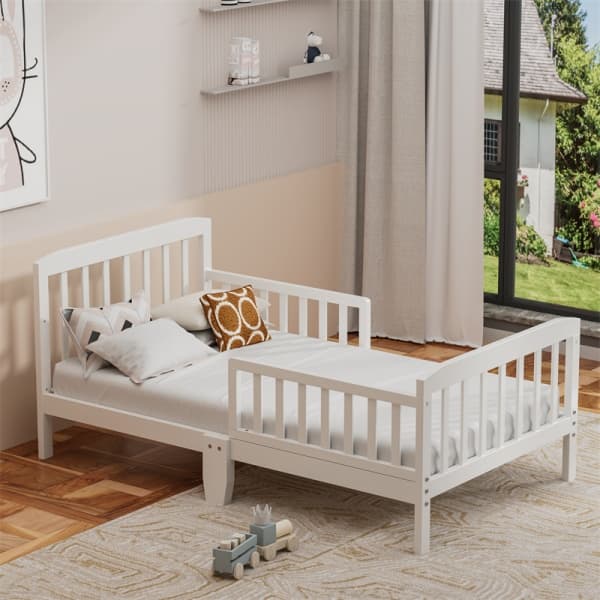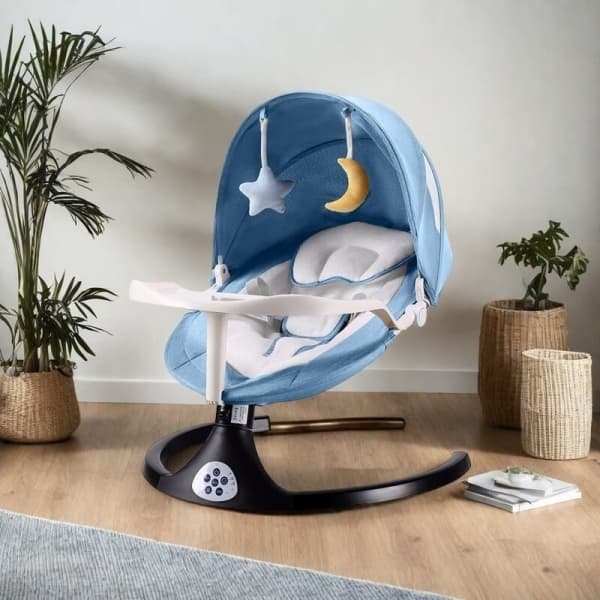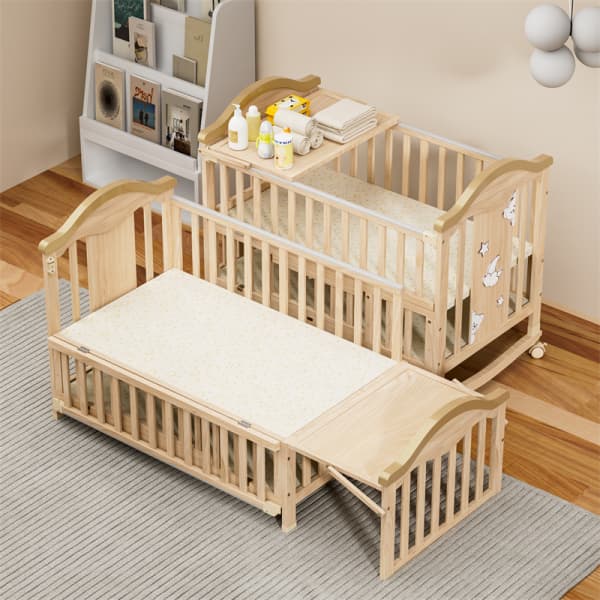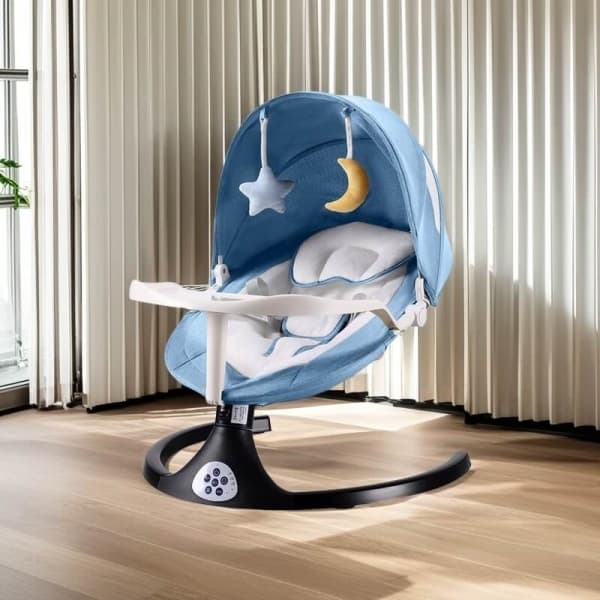As an excited new parent, you want to create the perfect nursery sanctuary for your precious bundle of joy. One of the most crucial decisions revolves around selecting the ideal sleeping arrangement – a mini crib or a full-sized traditional crib. Both options offer distinct advantages and cater to different needs, making it essential to weigh the pros and cons carefully.
Mini Crib Vs Crib: Definition and Features
Mini Crib
Mini cribs, also known as portable cribs or compact cribs, are a smaller, more space-efficient alternative to standard cribs. These compact sleeping spaces typically measure around 24 inches wide, 38 inches long, and 36 to 45 inches tall. Mini cribs are designed to accommodate newborns and infants up to approximately 24 months old, or until they reach the maximum weight or height limit specified by the manufacturer. Compact, portable, and space-savvy, small cribs have emerged as a popular choice for modern parents.
Crib
Standard cribs are the classic and most commonly used sleeping option for infants. They typically measure around 28 inches wide, 52 inches long, and 35 to 55 inches tall, providing ample space for your growing baby. Standard cribs often feature adjustable mattress heights, allowing you to lower the mattress as your child becomes more mobile. Many standard cribs also convert into toddler beds, extending their usability as your child grows.
Steeped in tradition and designed for longevity, full-sized cribs have been the cornerstone of nurseries for generations. These spacious sleeping sanctuaries offer a wealth of benefits that have stood the test of time.
Pros and Cons of Cribs
Pros of Cribs
Spacious Comfort and Enduring Durability
Traditional cribs adhere to strict size regulations, typically measuring 28 inches wide and 52 inches long. This ample space not only provides a comfortable sleeping environment for your little one but also ensures that they can continue using the crib well into their toddler years.
Reliable Safety and Security
Cribs are designed with high sides or slats to prevent babies from falling out, providing a secure sleeping environment. They also adhere to strict safety standards to minimize risks such as suffocation and entrapment.
A Seamless Transition to Toddlerhood
One of the most significant advantages of traditional cribs is their ability to adapt to your child’s growth. Many models can be converted into toddler beds or day beds, extending their lifespan and eliminating the need for an immediate replacement as your child grows.
A Timeless Investment in Style and Quality
Traditional cribs are available in a vast array of designs, from classic to contemporary, ensuring that you can find the perfect complement to your nursery’s aesthetic. Moreover, these cribs are often crafted from high-quality materials, making them a durable and long-lasting investment for your family.
Accessory Abundance and Seamless Integration
With traditional cribs being the industry standard, finding compatible accessories like mattresses, fitted sheets, and crib skirts is a breeze. This abundance of options allows you to create a cohesive and comfortable sleeping environment tailored to your preferences.
Adjustable Height
Many cribs feature adjustable mattress heights, allowing parents to lower the mattress as the baby grows and becomes more mobile, reducing the risk of climbing accidents.
Cons of Cribs
High Cost
Quality cribs, especially those with convertible features and made from durable materials, can indeed be quite expensive. Convertible cribs, which can transform into toddler beds, day beds, or even full-sized beds, often come with a higher price tag due to their added functionality and longevity.
Takes up More Space
Standard cribs can take up a significant amount of space in a nursery, which can be challenging for families living in smaller homes or apartments. The large footprint of a standard crib may limit the layout and design options for the nursery, making it difficult to optimize the space for other essential items or activities.
Difficult to Assemble
Assembling a crib can be a time-consuming and potentially frustrating task, especially for parents who are not accustomed to assembling furniture or following complex instructions. Cribs often come with multiple parts, hardware, and detailed assembly instructions, requiring careful attention to ensure proper construction and safety. While some cribs come partially assembled or with assembly services offered by retailers, many parents still find the assembly process to be a daunting and labor-intensive task.
Poor Portability and Mobility
While some cribs are designed with portability features such as wheels or foldable frames, they are generally less portable than mini cribs. Standard cribs, especially those made from solid wood or other heavy materials, can be bulky and difficult to move from room to room or transport when traveling. Additionally, cribs with fixed frames or non-collapsible designs may pose challenges when trying to store or transport them in smaller spaces such as apartments or vehicles.
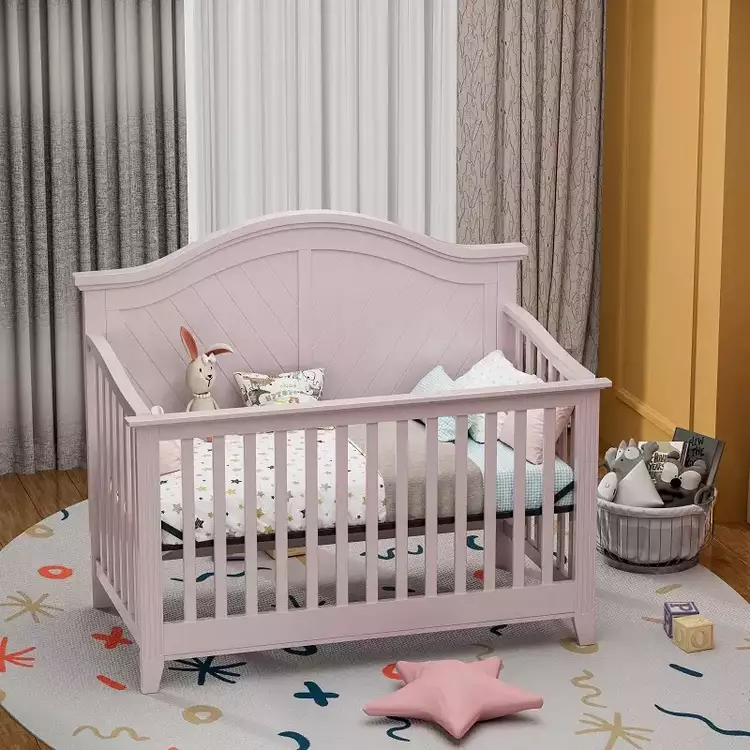
Pros and Cons of Mini Cribs
Pros of Mini Cribs
Petite Dimensions, Colossal Advantages
This compact footprint is about two-thirds the size of a standard crib, making mini cribs an excellent choice for smaller nurseries or shared rooms where space is limited. The compact design of mini cribs allows for more flexibility in nursery layout and design. Parents can easily fit a mini crib into tight spaces or arrange multiple mini cribs to accommodate twins or siblings in a single room. This versatility makes mini cribs a practical solution for families with limited living space or those who want to maximize the use of their nursery area.
Portability at Its Finest
Many mini cribs are designed with lightweight materials, making them easy to move and maneuver around the home. This lightweight construction also makes mini cribs ideal for parents who may need to transport the crib between rooms or take it on trips. Some mini cribs come equipped with wheels or casters, allowing for effortless mobility from room to room. This feature is particularly useful for parents who want the flexibility to move the crib around the house as needed.
In addition to being portable within the home, many mini cribs are also designed for travel. Some models feature foldable frames or collapsible designs that make them easy to pack up and take on trips to grandparents’ homes, vacations, or other destinations.
The Price is Attractive
Mini cribs are often more affordable than standard cribs, making them an attractive option for budget-conscious parents. Despite their lower price point, mini cribs still offer the same level of safety, comfort, and functionality as their larger counterparts. This affordability makes mini cribs accessible to a wide range of families, regardless of their budget constraints.
Cons of Mini Cribs
Limited Lifespan
Mini cribs are designed to accommodate infants up to a certain age or size, but some babies may outgrow them sooner than standard cribs. As babies grow and become more active, they may need more space to move around and stretch out comfortably while sleeping. This can necessitate an earlier transition to a larger bed, such as a toddler bed or a standard-sized bed.
Special Mattress Size Required
Mini cribs require a specially sized mattress, which may be smaller and more difficult to find compared to standard crib mattresses. This specialized sizing can limit the availability of mattress options and may require parents to purchase bedding and accessories specifically designed for mini cribs.
Storage Limitations
While mini cribs are designed to be space-saving, they may not offer as much storage space as standard cribs. This can be a drawback for parents who rely on the storage features of a crib to keep essential baby items organized and within reach. To overcome storage limitations, parents may need to explore alternative storage solutions such as wall-mounted shelves, under-crib storage bins, or standalone dressers or storage units. However, these additional storage solutions may require extra space in the nursery and add to the overall cost of furnishing the room.
Limited Design and Customization Options
Compared to standard cribs, mini cribs may have fewer design options available, limiting choices in terms of style, color, and features. This can make it challenging for parents to find a mini crib that matches their nursery decor or meets their specific preferences.
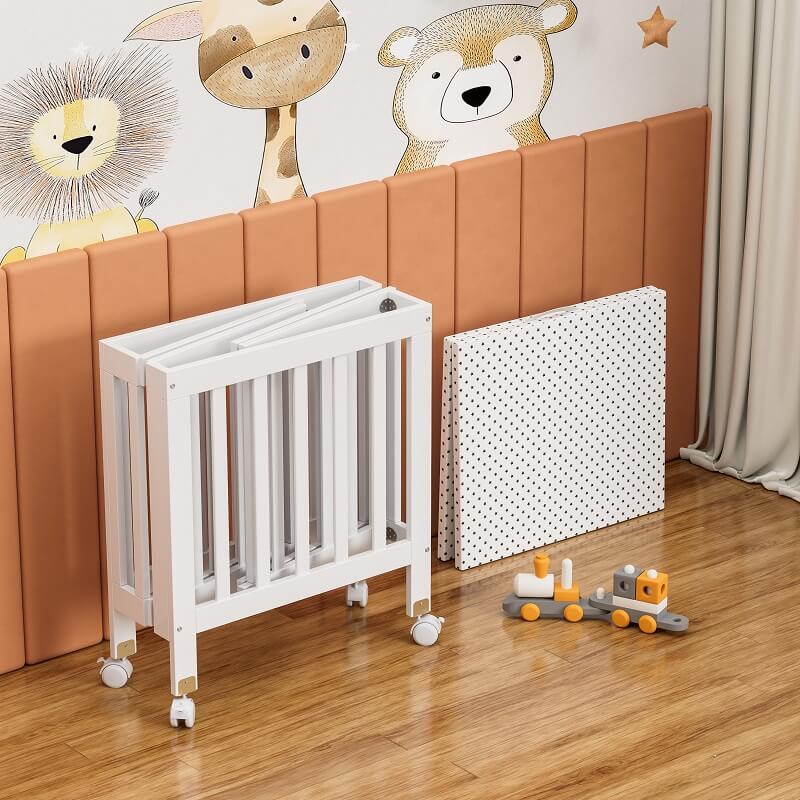
Factors to Consider When Choosing
Cost Comparison
1. Initial Purchase Price
Standard cribs generally have a higher initial purchase price compared to mini cribs due to their larger size and more intricate designs. Mini cribs are typically more affordable upfront, making them a budget-friendly option for parents with limited funds or those looking to save money without compromising on safety and quality.
2. Long-term Cost Implications
While standard cribs may have a higher initial cost, they often offer longer-term usability and versatility. Some standard cribs are convertible, meaning they can be transformed into toddler beds, daybeds, or even full-sized beds with the purchase of conversion kits. Mini cribs may have a shorter lifespan compared to standard cribs, as babies may outgrow them sooner. While mini cribs are generally more affordable upfront, parents should consider the potential need for a larger bed or additional furniture as the child grows, which may result in extra costs down the line.
Space and Lifestyle Considerations
1. Evaluating Your Living Space and Lifestyle Needs
Consider the size and layout of your nursery or living space when choosing between a standard crib and a mini crib. Standard cribs may be too large for smaller rooms or apartments, whereas mini cribs offer a space-saving solution without sacrificing safety or comfort.
2. Factors to Consider if Planning to Move or Travel Frequently
Mini cribs are designed with portability in mind, featuring lightweight construction and often foldable designs for easy transportation. If you plan to travel frequently or move between different locations, a mini crib may be a practical choice for its convenience and ease of assembly.
Longevity and Usability
1. How Long Each Option Can Be Used
Standard Cribs
- Standard cribs typically last from infancy through toddlerhood and sometimes beyond.
- Many standard cribs are designed to accommodate infants up to around 2-3 years old, depending on the size and growth rate of the child.
- Convertible cribs, which can be transformed into toddler beds, daybeds, or full-sized beds with conversion kits, offer extended usability and can last several years or even throughout childhood.
Mini Cribs
- Mini cribs typically last from infancy through the early toddler years, but may have a shorter lifespan compared to standard cribs.
- Babies may outgrow mini cribs sooner due to their smaller size, necessitating an earlier transition to a larger bed.
2. Resale Value and Second-hand Market for Cribs and Mini Cribs
Both standard cribs and mini cribs may hold their value well in the second-hand market if they are well-maintained and in good condition. However, convertible cribs may have higher resale value due to their versatility and ability to adapt to different stages of a child’s growth.
Long-Term Plans and Future Needs
If you plan to have additional children in the future, a standard crib may be a more cost-effective investment, as it can be reused for multiple children and offers longer-term usability. However, if you envision using the crib for a shorter period or have limited space, a mini crib may be a more practical choice.
Can I Use Regular Crib Sheets on a Mini Crib
In most cases, standard crib sheets will not fit properly on a mini crib mattress because mini crib mattresses are smaller than standard crib mattresses. Standard crib mattresses typically measure around 28 inches by 52 inches, while mini crib mattresses are usually around 24 inches by 38 inches.
Using regular crib sheets on a mini crib mattress may result in a loose fit, which can pose a safety hazard as it may bunch up or come loose during sleep, potentially causing suffocation or entrapment hazards for the baby.
It’s essential to use properly fitting sheets specifically designed for mini crib mattresses to ensure a snug and secure fit. These sheets are designed to fit the smaller dimensions of mini crib mattresses, providing a safe and comfortable sleeping environment for your baby.
When purchasing sheets for a mini crib, make sure to check the dimensions of the mattress and look for sheets specifically labeled as “mini crib sheets” or “portable crib sheets” to ensure they fit properly and securely.
Recommended Related Articles
- Top 20 Crib Manufacturers in 2025
- Bedside Crib: Attached to Parents’ Bed Ultimate Guide
- Best Cribs for Small Spaces Complete Guide
- 10 Best-Rated Mini Baby Cribs Brands of 2025
- Best 20 Baby Crib Manufacturers in USA – Clafbebe
- Best Baby Cribs in 2025: A Complete Guide – Clafbebe
- When to Transition Baby to Crib?


